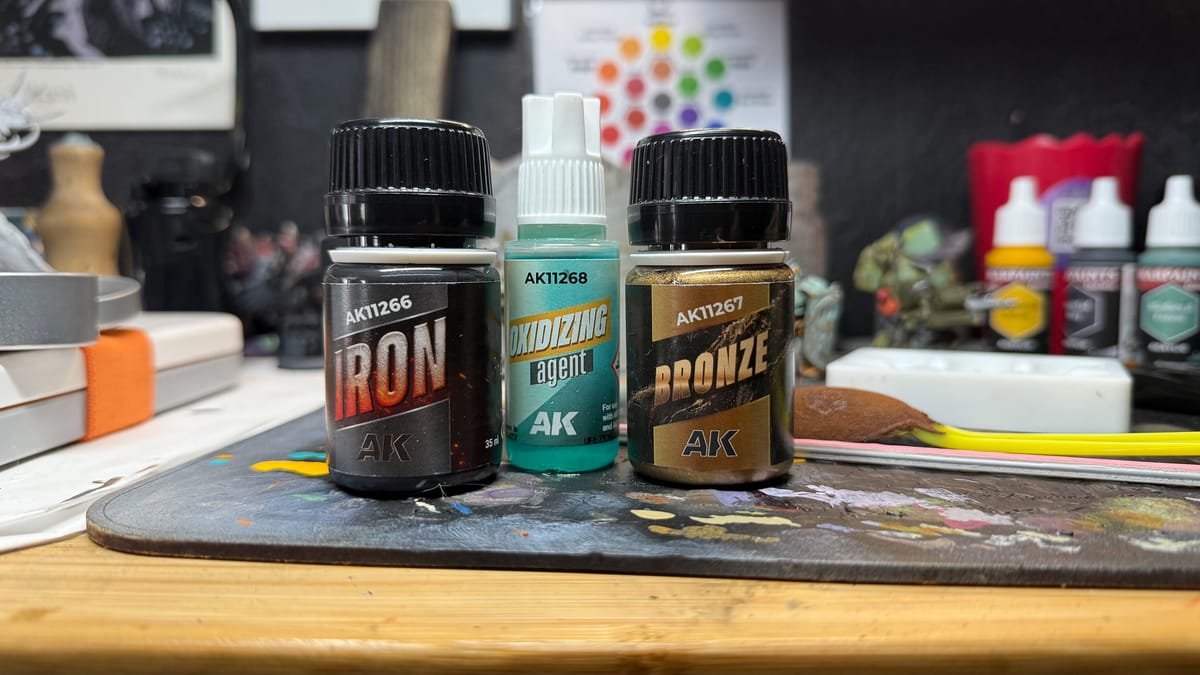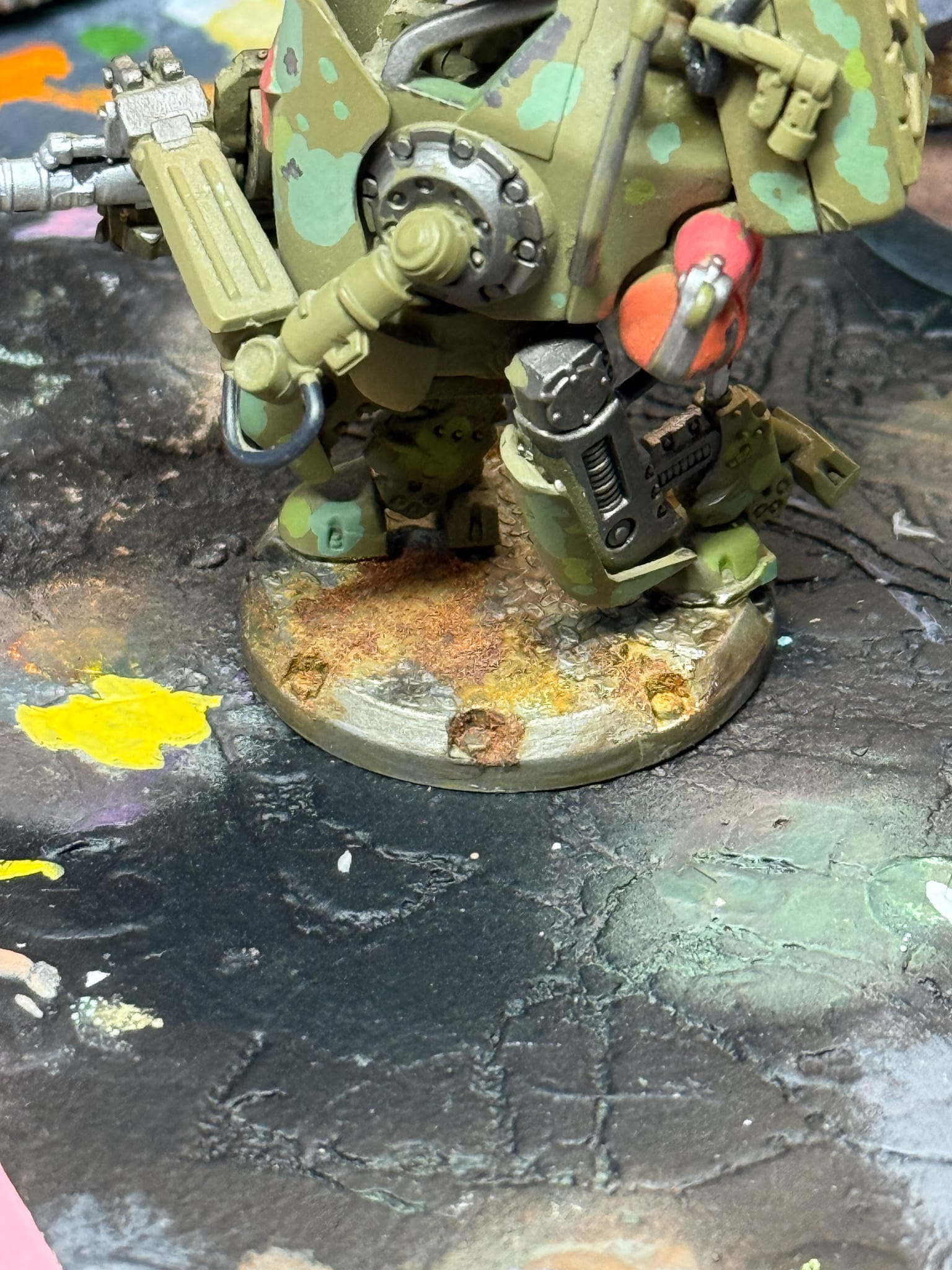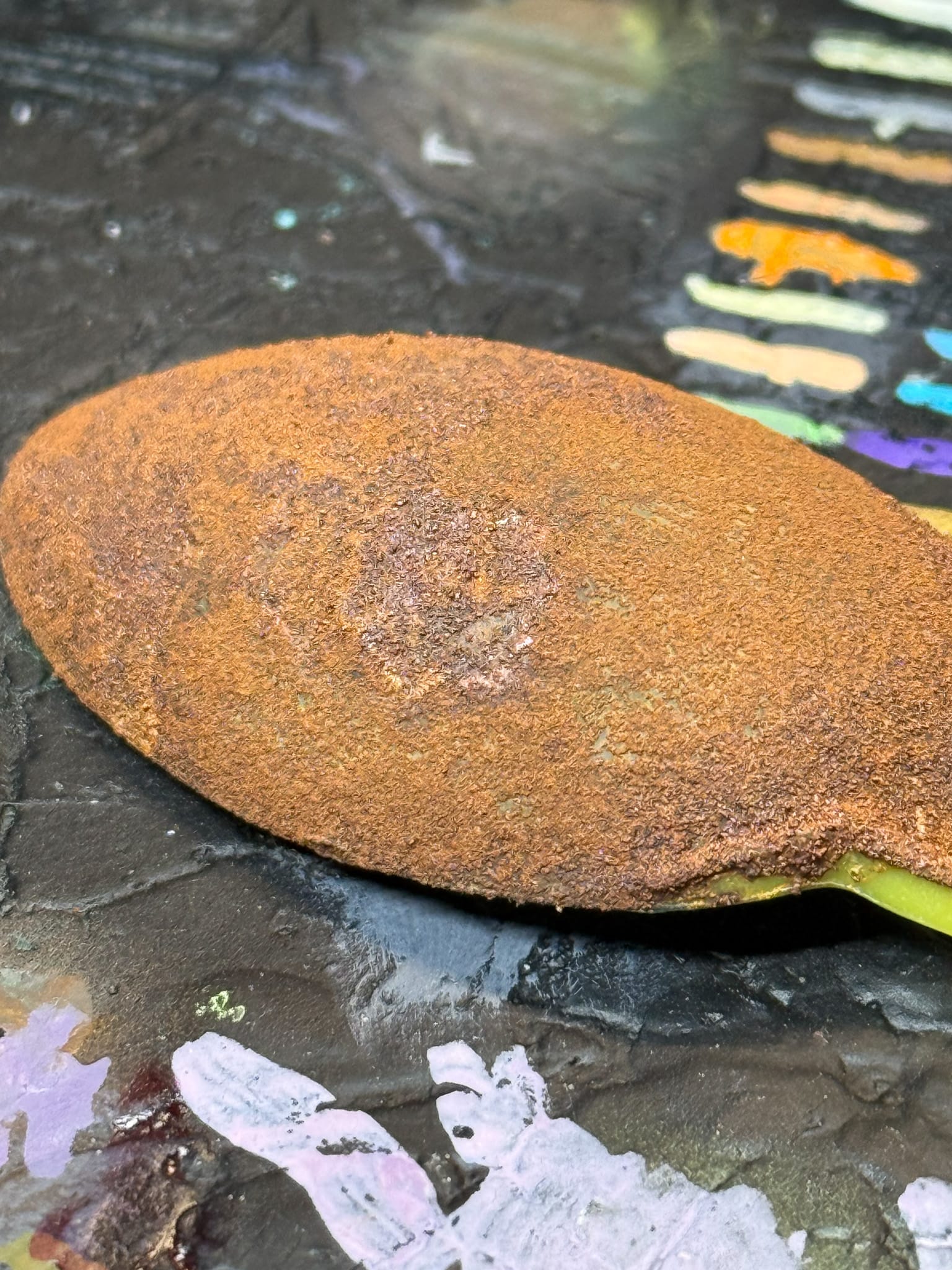
Weathering effects and the miniature hobby go hand in hand. From a scale modeler building World War 2 era tanks and adding rust to the bolts, to a Warhammer player adding verdigris to their Adeptus Custodes or Stormcasts, or the tabletop gamer adding some rust to a sword their D&D miniature uses, weathering adds a level of creativity and realism to our projects.
There are tons of products to achieve weathering. Every paint range inevitably has weathering effects, generally by mixing a color that is similar to rust (typically orangeish ruddy browns) or verdigris (teal) with a texture. Army Painter achieves this in their effect paints with bits of resin, which, when dry, create the desired texture. Other paints, like Dirty Down, are Hollywood-grade enamel paints that, when dry, simulate the effects of rust and verdigris with a high level of realism. And, you can’t talk about weathering effects without mentioning AK Interactive. With a long history of serving hobbyists a variety of weathering effects from pencils to washes to enamel products meant to work in concert with each other to create things like realistic moss, dirt, and grime.
AK sent me a product that completely blew my mind, because it does something that none of the above products do…it uses a chemical reaction + oxygen to create actual oxidation, which is the science behind both Rust and Verdigris. Let’s get corroded.

Both of the new Rust and Verdigris Effects are acrylic paints that contain Bronze and Iron microparticles, which, when exposed to the Oxidizing agent and given time (they recommend 12 hours on their documentation), you will see the actual effect appear.
In both packages, you receive a bottle of the paint and a bottle of agent. Application is the same for both products, which is fantastic. Less rules means more time painting. For each paint, you give them a good shake (I use my vortex mixer) and then paint an even coat. In my tests, I tried both thin and thick layers, and I would recommend thinner layers for the Bronze, as it goes on thick, and if you don’t want a thick texture, you might want to thin it down. Since these are both acrylics, water or your favorite thinner should work.
The Iron paint goes on thick, and if I’m honest, the more, the better. After you’re done painting, give it time to fully dry. This is very important. In my tests, I didn’t wait a full 10 minutes for the bronze to dry, and when I started applying the activator, it removed paint.



The Verdigris is striking and fast! Just be precise of where you want to place the effect.
I don’t know what is in the activator, so my advice to you is to wear gloves. The bottles do show warnings for both skin contact and water stream contact, so don’t pour any excess down the drain, and if it gets on you, flush your skin with lots of water. Remember, you don't want to get rusty!
Once your pieces are dry, use the oxidizing agent. In my tests, I kind of covered all of the spaces with the paint/agent combo, but I think to use this practically, be conservative with where you place your effects, because after 12 hours, as you see below, the effect is INTENSE. My Stormcast model went from being a plain gold boy to a corroded hunk of metal. Now, this is easily fixed with some dry brushing (and honestly, you can scrape the material off your model with a finger), but just be aware.



The Rust is heavy textured and can create a variety of effects and tones, based on coverage.
I’m amazed by these products. In my spoon test, the rust effect is gorgeous and real, because the iron has actually rusted. This is what puts this product above others for certain applications. I say “certain applications” because unlike competing products, you’re letting nature take the wheel, and that can lead to both exciting and unexpected places. If you look at my Knight model I produced for 1490 Doom, this is an example where I let the paint do what it was going to do, and while I like the result, it might not be everyone’s cup of tea. On my Dust Tactics model, I was more conservative with my placement of the paint, which led to a more dramatic effect that I really like.
I see these products being very useful, but I will also say that in a hobby where there are many competing products, are these necessary? For some hobbyists, they’ll say “no!’ and clutch their Dirty Down or Typhus Corrosion. For others, these add that next level of texture and realism you might be desiring. As for me, I’m going to exclusively use these for basing and terrain purposes. On those kinds of projects, I think letting nature step in and take its course is perfect for that, but if I’m painting up a display-level Death Guard, I want more control over my experience.
You can purchase both effects from AK Interactive directly for roughly $10 USD, or check out your local hobby store.
AK Interactive Bronze and Rust Effects
Great
AK Interactive’s Verdigris and Rust effects provide beautiful and real weathering results on your projects, at the sacrifice of control.
Pros
- Incredible realistic effect
- Great coverage of paint
Cons
- Lack of control could lead to undesired effects
- Lots of competitive products
This review is based on a retail copy provided by the publisher.
